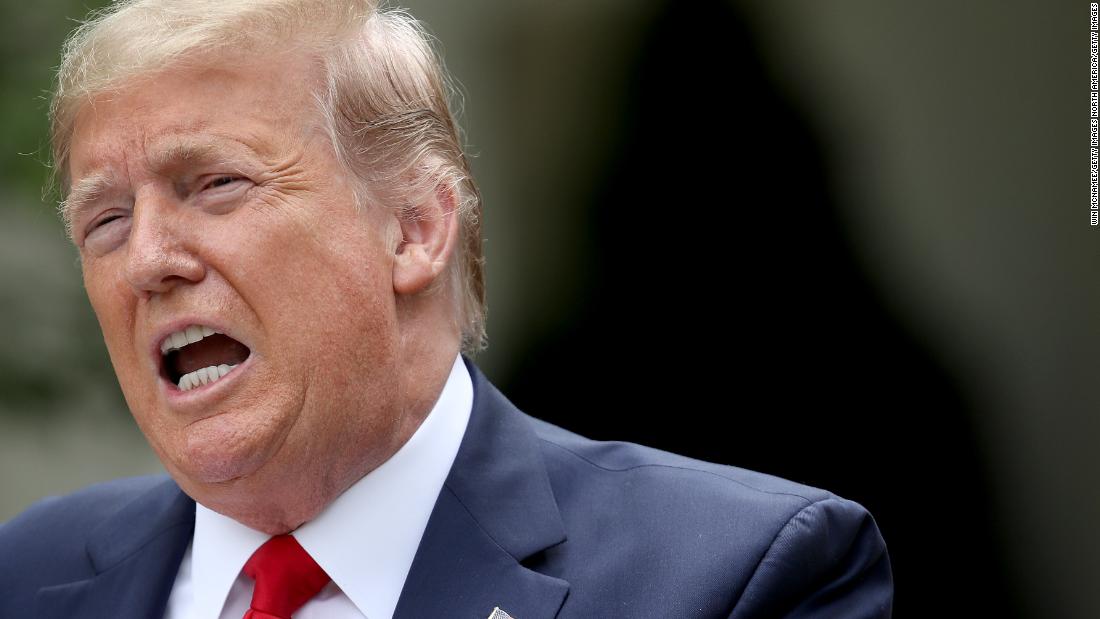Trump’s efforts to change the subject have never appeared more blatant or off-key
Trump’s efforts to change the subject at moments of peril have been a hallmark of his entire career in politics and, when successful, a constant source of frustration for his rivals. But rarely have they appeared more blatant or off-key than now, as a battered nation emerges from a pandemic that has left more than 100,000 dead and as racial unrest brews again.
That it is all happening five months before Trump faces an election in which polls show him trailing only heightens the sense of a leader in crisis, even as he insists he has a handle on both matters and attempts to proceed as planned with his presidency. Trump, cognizant of his precarious political position, has retrenched.
Unwilling or unable to strike a unifying tone, Trump lashed out Saturday morning when he criticized the Democratic mayors of Washington and Minneapolis while appearing to summon his own supporters to rally outside the White House.
After announcing his was safe, warning he was protected by “vicious dogs” and “ominous weapons,” Trump provided a play-by-play of Friday evening’s protests, of which he said he’d “watched every move.” Trump wrote: “Tonight, I understand, is MAGA NIGHT AT THE WHITE HOUSE???”
More than 12 hours after tweeting “when the looting starts, the shooting starts” as images of Minneapolis fire and riots played on cable news, Trump insisted on Twitter that his message was not, in fact, a reference to brutal civil rights-era police tactics. But he ignored the topic in the Rose Garden, choosing instead to focus on China and retreating to the Oval Office as reporters shouted questions.
“It certainly looked like there was no excuse for it,” he said of the violent arrest during a roundtable event meant to focus on coronavirus.
The episode followed Trump’s longtime model of igniting controversy before retreating hours later. If anything, leaving his message lingering without explanation was a diversion in itself and another example of Trump’s inability — or unwillingness — to put aside the divisive itch he’s long cultivated.
As coronavirus began ravaging parts of the country, he did declare himself a wartime President waging battle against the “invisible enemy.” But with war comes death — in this case, more US deaths than the Vietnam and Korean wars combined — and Trump was slow to acknowledge the 100,000 milestone reached midweek.
He was aboard Air Force One when the death toll officially ticked into six digits, returning to Washington after his plans to witness the first manned US space launch in nearly a decade had been thwarted by the weather.
He had hoped that the trip, with his entire family in tow, would help shift a national storyline from the miserable pandemic toward a more optimistic one of scientific potential. But the launch was scrubbed when thunderstorms rolled in and Trump was forced to return to Washington.
The President didn’t address the grim figure as he returned to the White House with the first lady on Wednesday.
He finally tweeted about it on Thursday morning, deeming it “a very sad milestone.” But he did not make time to address it in person.
Instead, he has wielded sinister conspiracies and false allegations.
He has actively worked to relitigate the circumstances that led to Robert Mueller’s Russia investigation, including this week, when he fan-danced around the still-unnamed allegation against his predecessor Barack Obama.
At one time, Trump used his once-a-week campaign rallies to unleash the vitriol and paranoia that his supporters love and that he believes are the very characteristics that led to his unlikely victory in 2016.
Rallies are out of the question for now — though aides say they’re looking to revive them sooner rather than later.
This story has been updated with additional developments.
![]()


